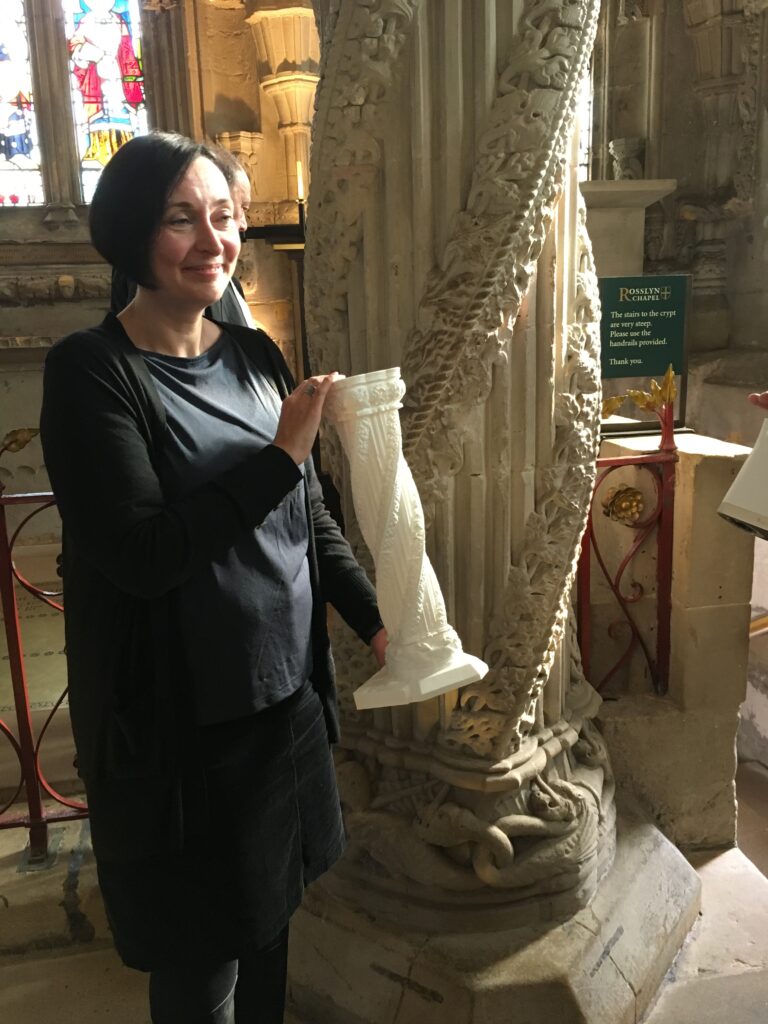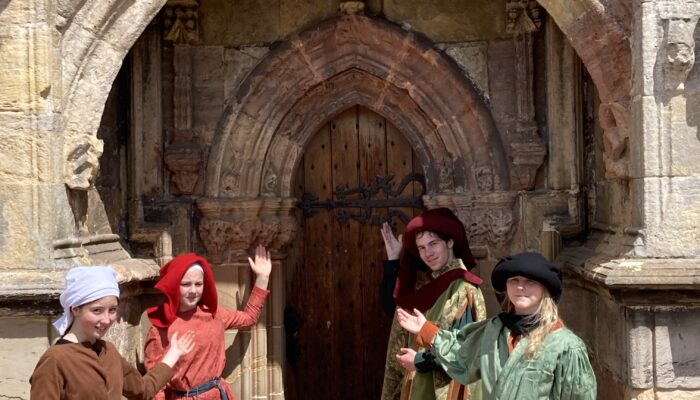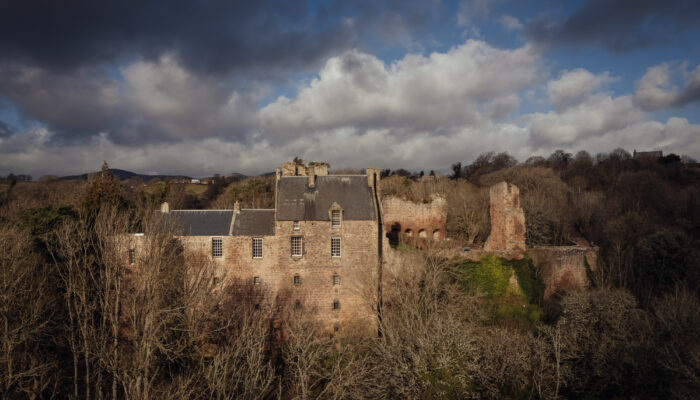21st century technology provides 3D access to Chapel

October 9, 2019
Twenty-first century technology is being used to make key features of fifteenth century Rosslyn Chapel more accessible for visually impaired visitors.
Three of the best known features in Rosslyn Chapel – The Apprentice Pillar, The Mason’s Pillar and a Green Man carving – were digitally scanned in the summer as part of an ongoing partnership between Rosslyn Chapel and Historic Environment Scotland. A series of 3D prints, produced from these scans, has now been completed and will become part of a handling kit for visually impaired visitors to Rosslyn Chapel.
The 3D print of The Apprentice Pillar is 46cm high and took 142 hours to print, the print of The Mason’s Pillar is 46cm high and took 130 hours to print and the Green Man is on a 1:1 scale and took 50 hours to print. All three were printed on a fused deposition modelling (FDM) 3D printer in PLA (polylactic acid), a thermoplastic derived from corn starch, which is industrially biodegradable. The digital 3D scans were made at 0.5mm resolution using a structured light scanner.
Ian Gardner, Director of Rosslyn Chapel Trust, said: ‘We are very keen to make the Chapel as accessible as possible and, thanks to Historic Environment Scotland, these very accurate 3D prints will help visually impaired visitors to appreciate the intricate carvings even more.’
Lyn Wilson, Digital Documentation Manager at Historic Environment Scotland, said: ‘We are delighted to have worked with Rosslyn Chapel Trust to digitally scan the Chapel’s ornate stonework. This project is a great example of how we can harness cutting-edge technology to increase accessibility and ensure the historic environment can be enjoyed by all.’
Rosslyn Chapel was founded in 1446 and is open to visitors all year round. The Mason’s Pillar, said to be the work of the master mason, and The Apprentice Pillar, which is said to be the work of his young apprentice, are both renowned features and the Green Man is one of over 100 foliate heads situated inside and outside the Chapel.
Posted in Access



